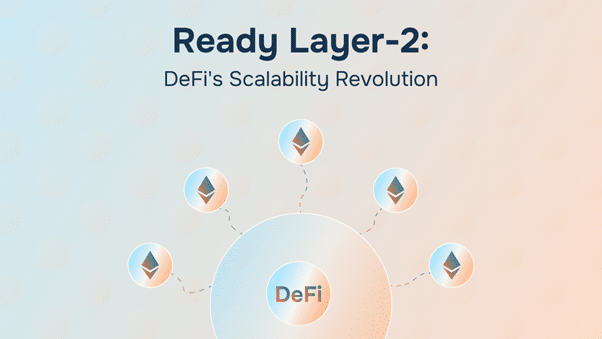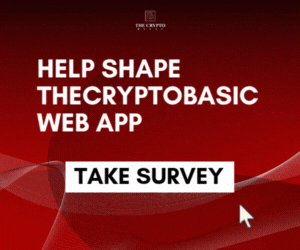Even the cutting edge of digital finance can suffer gridlock and a dearth of its prime real estate, blockspace.
Decentralized finance (DeFi), primarily rooted as it is in Ethereum, is facing significant challenges around scalability and user experience. The blockchain is a victim of its own success. And, now, sluggish confirmation times and exorbitant transaction fees impede the seamless operation of the protocols built atop it, curtailing widespread adoption and hindering the full potential of DeFi services.
To overcome these hurdles, the emergence of Layer-2 (L2) solutions has proven instrumental, and total value locked (TVL) in DeFi has surged as a result. In this article, we’ll look at the main players, how these solutions are being implemented, and what to expect in the coming year and further ahead.
Why Layer-2 is Needed
DeFi’s ecosystem, operating primarily on Layer-1 (L1) blockchains, and mainly still on Ethereum, grapples with significant scaling challenges. L2 solutions address the bottlenecks of L1 by providing scalability enhancements and mitigating transaction costs.
By offloading a substantial portion of transactions to secondary networks, and processing transactions away from the congested main chain, L2 can deliver faster and more cost-effective operations.
High gas fees on L1 often impede user participation. L2 also tackles this issue by facilitating off-chain transactions, reducing the reliance on on-chain operations and subsequently lowering transaction costs.
L2 solutions also excel in improving transaction confirmation times. Off-chain processing allows for quicker settlement, ensuring a seamless user experience and positioning L2 as a key driver in the evolution of greater speed and efficiency in DeFi.
Implemented Layer-2 Solutions
Several L2 solutions have already been implemented, each offering unique approaches to scalability. Rollups are a prominent L2 solution categorized into Optimistic Rollups and Zero-Knowledge Rollups (zk-Rollups). Optimistic Rollups leverage off-chain computation and later settle on the main chain, reducing transaction costs and enhancing scalability. Zero-Knowledge Rollups use cryptographic proofs to achieve scalability without compromising security.
L2 solutions on Ethereum made considerable progress in 2023, and the figures testify to their importance in the ecosystem. As of January 22, 2024, the total value locked (TVL) across L2 platforms was $21.4 billion, representing 37 per cent of DeFi’s TVL of $57.11 billion.
Optimistic Rollups currently dominate Ethereum L1 solutions, thanks to their early adoption and seamless integration with existing Ethereum infrastructure. Platforms Arbitrum and Optimism are far out in front, locking in three-quarters of TVL, with 49.44 per cent and 25.36 per cent, respectively.
However, zkRollups, represented by platforms such as zkSync Era, dYdX, and Linea, have a combined TVL of $1.62 billion, making up 7.6% of market share. While they currently are far behind Optimistic Rollups in adoption, more L1 networks are gravitating toward ZK technology, as it allows transaction verification without revealing specific details, cutting storage costs and increasing privacy.
While zkRollups may be more challenging to develop, the advantages they offer justify the complexity and extra effort involved. This is why Fuse Network, a prominent Layer-1 blockchain focused on scaling Web3 payments, announced in December its plan to build a zkRollups L1 solution for payments.
The multi-protocol DeFi platform Summer.fi – which recently integrated with lending protocol Morpho Blue, bringing permissionless market creation to its users – also embraced L2 scalability in July 2023. Summer.fi enables users to borrow stablecoins against their preferred cryptocurrencies, magnify exposure using the platform’s Multiply feature, and earn yields across multiple layers and protocols. The addition of Morpho Blue’s permissionless market creation expands capabilities for users, allowing them to establish isolated lending markets and risk parameters for any asset. This integration, along with L2 enhancement, demonstrates DeFi’s capacity for continuous collaborative evolution. According to Summer.fi, its implementation of Optimism and Arbitrum L2 solutions not only improved trading functionality and enhanced scalability but also reduced transaction costs by up to 42 times.
In October, Summer.fi also joined Base, adding a third L2 network to its offerings. Developed by Coinbase, Base harnesses Optimistic Rollups architecture and has quickly established itself amongst leading L2 solutions, currently finding itself in fourth place in TVL, with a market share of 3.42 per cent. Base merges Coinbase’s extensive user base with cutting-edge L2 technology, delivering an accessible and cost-effective blockchain experience.
Network Enhancements in 2024
Further advances are anticipated which promise to truly redefine the efficiency and scalability of blockchain networks. One significant development is the Dencun Upgrade, expected to be completed in the first quarter. This upgrade is poised to have a transformative impact on Ethereum, introducing optimizations that enhance transaction throughput, reduce latency, and mitigate congestion, providing a more robust infrastructure for dApps and financial activities.
The Dencun Upgrade is expected to provide opportunities for new, more complex applications on L2. Rollups are predicted to be the biggest beneficiaries of the new upgrade, with their economic viability and scalability enhanced by reduced operational costs, enabling a reduction in transaction costs “by up to 10 times”.
Another noteworthy trend for 2024 is the emphasis on improving cross-L1 communication. This initiative seeks to address challenges related to interoperability and collaboration among different L1 solutions. Improved cross-L1 communication enables assets and data to move more smoothly. This improves integration between DeFi platforms, offering users a broader range of financial services and opportunities. In essence, by improving cross-L1 communication, DeFi becomes a more connected and user-centric ecosystem.
Looking Ahead
As DeFi matures, sustaining its growth requires addressing key long-term needs. To ensure its enduring success, continuous exploration is essential. This involves staying ahead of emerging trends, adapting to technological advancements, and fostering a supportive ecosystem.
Enhancing communication between different L1 solutions is imperative, so as to avoid fragmentation of user base and liquidity. Interoperability fosters a cohesive DeFi ecosystem, allowing seamless interaction between various protocols and expanding the scope of decentralized applications.
Improving accessibility through user-friendly interfaces is vital for attracting a broader user base. Simplified, intuitive platforms can encourage wider participation, democratizing access to DeFi services.
The current trajectory of DeFi trends signifies a shift toward the exploration of other L1 blockchains. Blockchain networks such as Binance Smart Chain, Solana, and Polkadot have emerged as key players, garnering substantial attention for their own solutions to faster processing, lower fees, and increased throughput. The surge of interest in L1 solutions underscores their potential to also contribute to DeFi’s future.
The ongoing exploration of diverse ecosystems not only enriches the DeFi landscape but also highlights the decentralized nature of financial innovations, creating a vibrant landscape of possibilities for users and developers alike.
Disclaimer: This article is provided by the Client. The Client is solely responsible for this page’s content, quality, accuracy, products, advertising, or other materials. Readers should conduct their own research before taking any actions related to the material available on this page. The Crypto Basic is not responsible for the accuracy of info and any damage or loss caused or alleged to be caused by the use of or reliance on any content, goods, or services mentioned in this article.
Please note that The Crypto Basic does not endorse or support any content or product on this page. We strongly advise readers to conduct their own research before acting on any information presented here and assume full responsibility for their decisions. This article should not be considered investment advice.
DisClamier: This content is informational and should not be considered financial advice. The views expressed in this article may include the author's personal opinions and do not reflect The Crypto Basic opinion. Readers are encouraged to do thorough research before making any investment decisions. The Crypto Basic is not responsible for any financial losses.



